Mastering Culinary Techniques: A Complete Guide
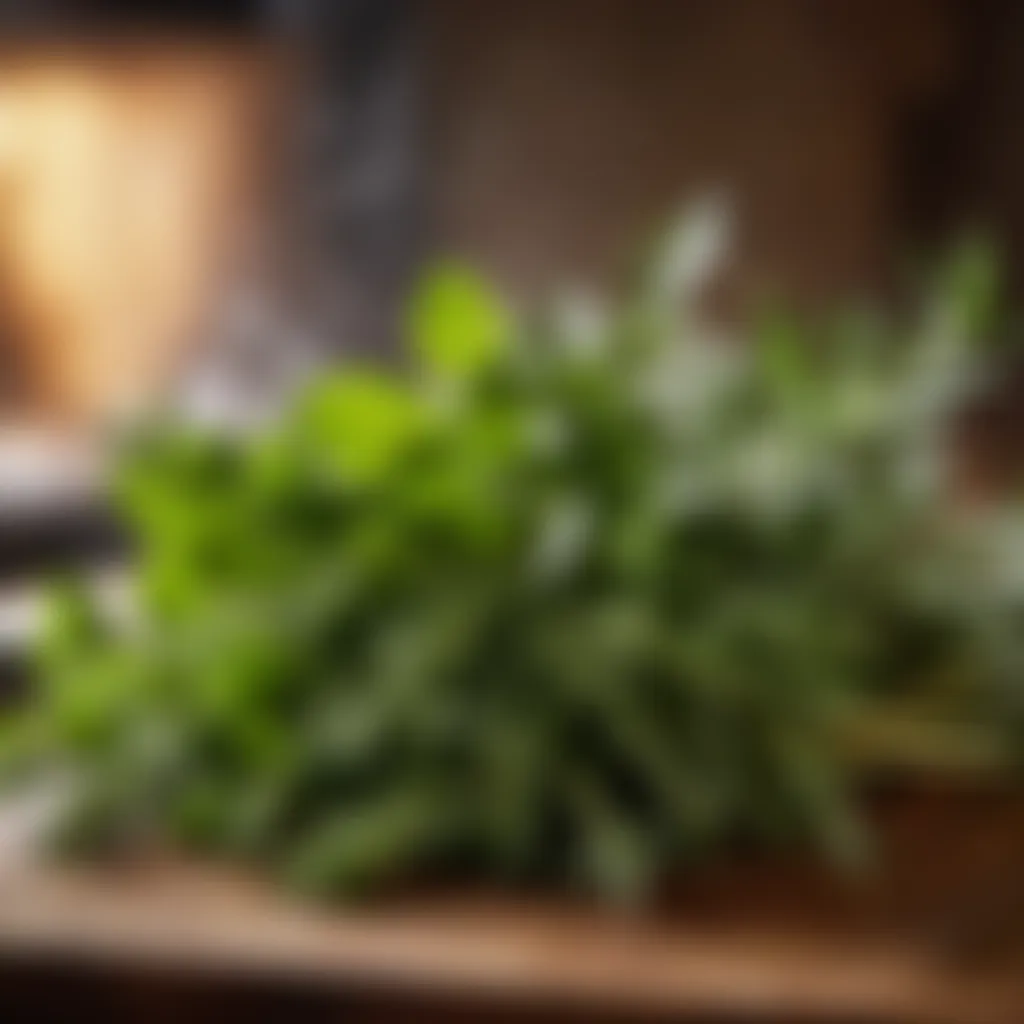
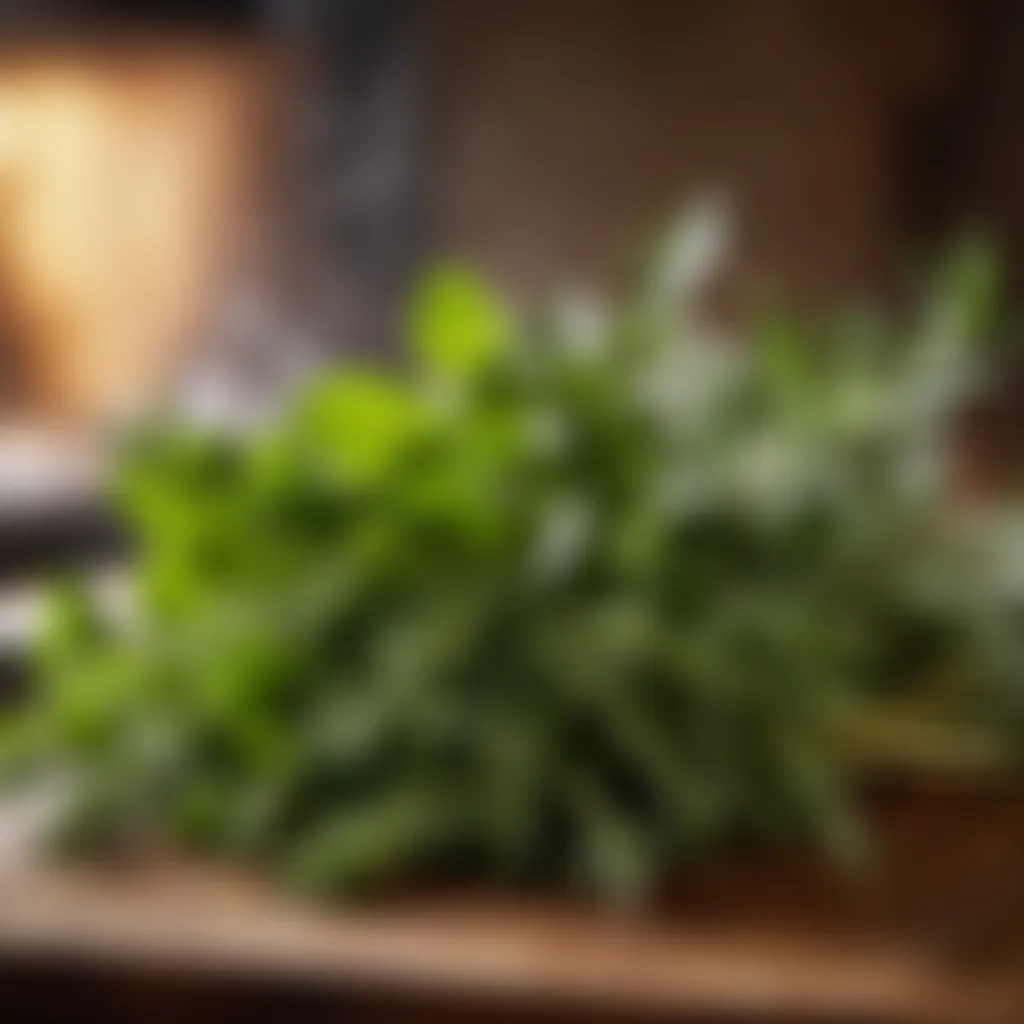
Intro
Cooking is more than just a series of steps to create a meal; it is an art form that blends science, intuition, and creativity. Whether you’re just beginning or have spent years honing your skills, the culinary world offers a wealth of techniques and methods waiting to be discovered. Understanding these foundational aspects can elevate simple dishes into culinary masterpieces.
This guide is designed to walk you through every essential part, from choosing the right ingredients to savoring the fruits of your labor. By the time you’ve reached the end of this comprehensive overview, you will be equipped to explore flavors and techniques that go beyond traditional cooking.
In a kitchen, precision and care play critical roles. Simple ingredients can transform into something exquisite with the right technique. An understanding of both classic and innovative practices will set you apart and foster confidence in your cooking endeavors. Let's dive in and explore!
Understanding Culinary Techniques
Understanding culinary techniques is like laying the foundation of a sturdy house. Without it, everything built atop may crumble under the weight of complexity and creativity. This section dives into the pivotal role that grasping these techniques plays in mastering the culinary arts, emphasizing various elements that are as much about skill as they are about familiarity with the craft.
Defining Culinary Arts
At its core, culinary arts refer to the art and science of cooking. It's not merely about the method; it's a blend of creativity, skill, and an understanding of ingredients. Each stir of the pot, each slice of meat, reflects a persona of the chef. Culinary arts also encompass the presentation of dishes, where the plate becomes a canvas for artistry. From an exquisite soufflé to a humble bowl of pasta, the defining aspect is the passion behind the cooking.
"Cooking is an expression of who you are, and it tells a story of your journey in the kitchen."
Understanding culinary arts allows one to explore diverse cuisines, enabling the cook to appreciate global culinary traditions and invite guests into a flavorful journey. This knowledge fosters not just recipes but also the ability to improvise and innovate while cooking.
Historical Context of Cooking
Cooking isn't just a skill; it’s a part of human history. The practice of preparing food can be traced back to prehistoric times when early humans used whatever they could find. Historical cooking methods, from roasting over an open flame to using intricate pottery for boiling grains, demonstrate the evolution of cooking techniques. Each culture added its own flair—like the spiced dishes of ancient India or the delicate pastries of France—shaping identity and survival.
Moreover, understanding this historical context enhances a cook's appreciation for how diverse methods arose. The pressure cooker, for instance, revolutionized how food is prepared, enabling quicker meals. As cooks today stand before their stoves, knowing the journey that has brought them there enriches the experience immensely.
Importance of Mastery
Mastery of culinary techniques transforms a simple act of cooking into an art form. When a cook knows their way around such techniques, they reduce the chance of mistakes. For instance, mastering knife skills not only ensures safety in the kitchen but enables precision and efficiency in preparing ingredients. From chopping herbs to slicing meats, confident execution can significantly enhance the overall cooking experience.
Furthermore, mastering techniques fosters creativity. The more one understands the properties of ingredients and methods, the more adept they become at experimenting. A housewife, for instance, who knows how to sauté effectively can tweak recipes to elevate them, turning an ordinary meal into something extraordinary.
In addition, mastery promotes versatility. With a solid foundation in various techniques, one can easily adapt to different cuisines, accommodating diverse palates. This adaptability is a powerful tool, allowing cooks to not just follow a recipe but to innovate and personalize each dish.
In summary, understanding culinary techniques is the first stepping stone in a cook's journey. It invites exploration into the depths of cooking, from its historical roots to the nuances of mastering fundamental skills. By embracing this knowledge, cooks can elevate their cooking, characterizing it with personal flair and insight.
Essential Cooking Techniques
Understanding essential cooking techniques is like having a toolbox filled with the right tools for every job. These methods not only enhance the flavor and presentation of your dishes but ensure that your efforts in the kitchen yield satisfying results. Mastering these core techniques forms the foundation on which a skilled cook builds their repertoire, enabling creativity and efficiency. In the realm of culinary arts, these techniques provide a structured approach to cooking, which makes the entire process more enjoyable and less daunting.
Knife Skills
Types of Knives
Knife skills are paramount in the kitchen. The different types of knives serve specific purposes that cater to various tasks, enhancing the chef’s efficiency. For instance, a chef's knife is an all-purpose blade, aptly named due to its versatility in slicing, dicing, and chopping. The key characteristic of a chef's knife is its curved blade, which allows for a rocking motion while cutting. This is a beneficial choice for anyone looking to gain proficiency in the kitchen as it can tackle a variety of food prep tasks.
On the other hand, the paring knife, although smaller, excels in intricate tasks like peeling fruits and deveining shrimp. Its distinct feature lies in its compact size, making it easy to handle during meticulous work. However, relying solely on larger knives without mastering the use of smaller ones can limit the chef’s effectiveness in preparing certain dishes. Having an arsenal of knives also means understanding their care and maintenance, which contributes to better cooking experiences.
Cutting Techniques
Moving beyond knife types, cutting techniques are essential for proper food preparation. Understandably, the way you cut your ingredients affects cooking time and dish presentation. Techniques such as julienne, chiffonade, and brunoise elevate the aesthetics of even the simplest of dishes. For example, julienne cuts create long matchstick-sized strips that are perfect for stir-fries or salads.
The unique aspect of mastering these techniques is that they not only influence cooking times but also affect the flavor release during cooking. Smaller, uniform cuts ensure even cooking, which is desirable for dishes requiring precision. Neglecting to adopt proper cutting techniques may lead to uneven textures in meals, which is counterproductive to achieving the desired culinary outcome.
Safety Practices
In the kitchen, safety is non-negotiable. Safety practices when handling knives ensure that the creative process doesn't become hazardous. Key practices include using a chopping board, keeping knives sharp, and adopting a pinch grip with the non-dominant hand to keep fingers safe from the blade. These practices significantly decrease the risk of cutting accidents, providing peace of mind while you cook.
Moreover, understanding that dull knives are more dangerous than sharp ones is crucial; they require more force to cut through ingredients, increasing the likelihood of slips. Incorporating safety practices into your routine not only builds confidence but also enhances efficiency and speed in food prep.
Heat Transfer Methods
Conduction
Conduction is the process of heat transfer through direct contact. It's fundamental to techniques like frying, where food is placed in direct contact with a hot surface, such as a pan. The key characteristic of conduction is that it provides even heat across the food item, creating that crispy exterior many home cooks crave.
However, the downside is that improper temperature management can lead to food burning on the outside while remaining undercooked on the inside. Gaining mastery in conduction requires careful temperature control and familiarity with your cookware.
Convection
Convection is a method where heat is transferred through fluid motion, be it air or liquid. An excellent example is in the oven where hot air circulates, cooking food evenly. One of the key features of convection is its ability to streamline cooking processes, especially in baking where uniform temperature matters.
Though convection is efficient, it can also lead to uneven browning if not monitored closely. Cooking in a convection oven is often faster, but this can sometimes throw off traditional baking times and techniques, necessitating adjustments for optimal results.
Radiation
Radiation, unlike conduction and convection, relies on electromagnetic waves to transfer heat. Grilling is a prime example of how radiation works to imbue food with unique, charred flavors. Foods placed on a grill are heated directly by radiant heat from the heat source, such as charcoal or gas flames.
While radiation can intensify flavors, it’s essential to consider cooking times. Foods can cook rapidly, which demands diligence to prevent burning. However, the depth of flavor achieved through grilling is often unmatched, making it a popular method in many culinary traditions.
Cooking Methods
Boiling
Boiling is a fundamental cooking technique where food is submerged in hot water. It’s especially useful for softening vegetables or cooking pasta. The characteristic of boiling is that it cooks food thoroughly and retains nutrients but can lead to loss of flavor if not seasoned adequately. The downsides include potential overcooking, which can result in mushy textures, particularly for delicate items like fish.
Steaming
Steaming, a gentler method, involves cooking food above boiling water, preserving nutrients effectively. This technique has gained popularity for health-conscious cooks because it minimizes fat use while retaining flavor and texture. Despite its benefits, steaming requires experience to ensure that foods are not left soggy or undercooked; timing is crucial here.
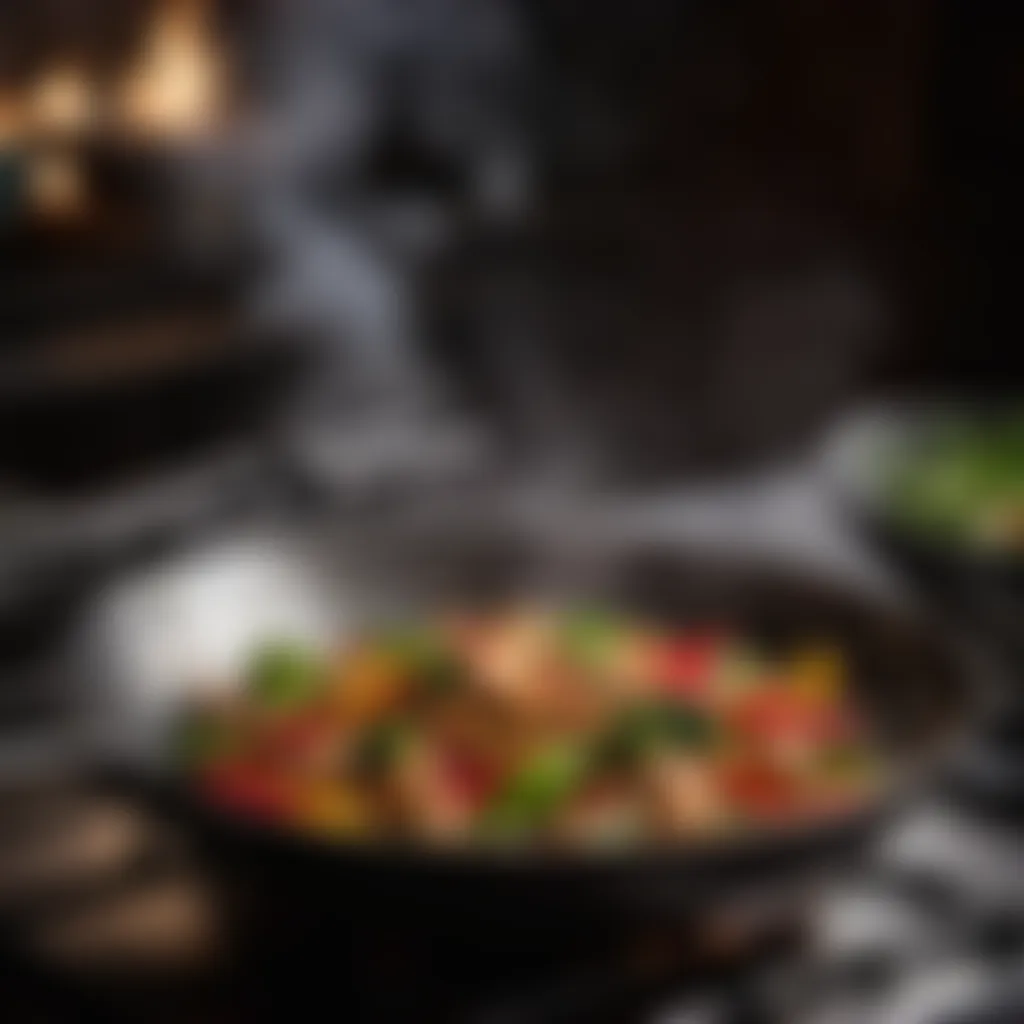
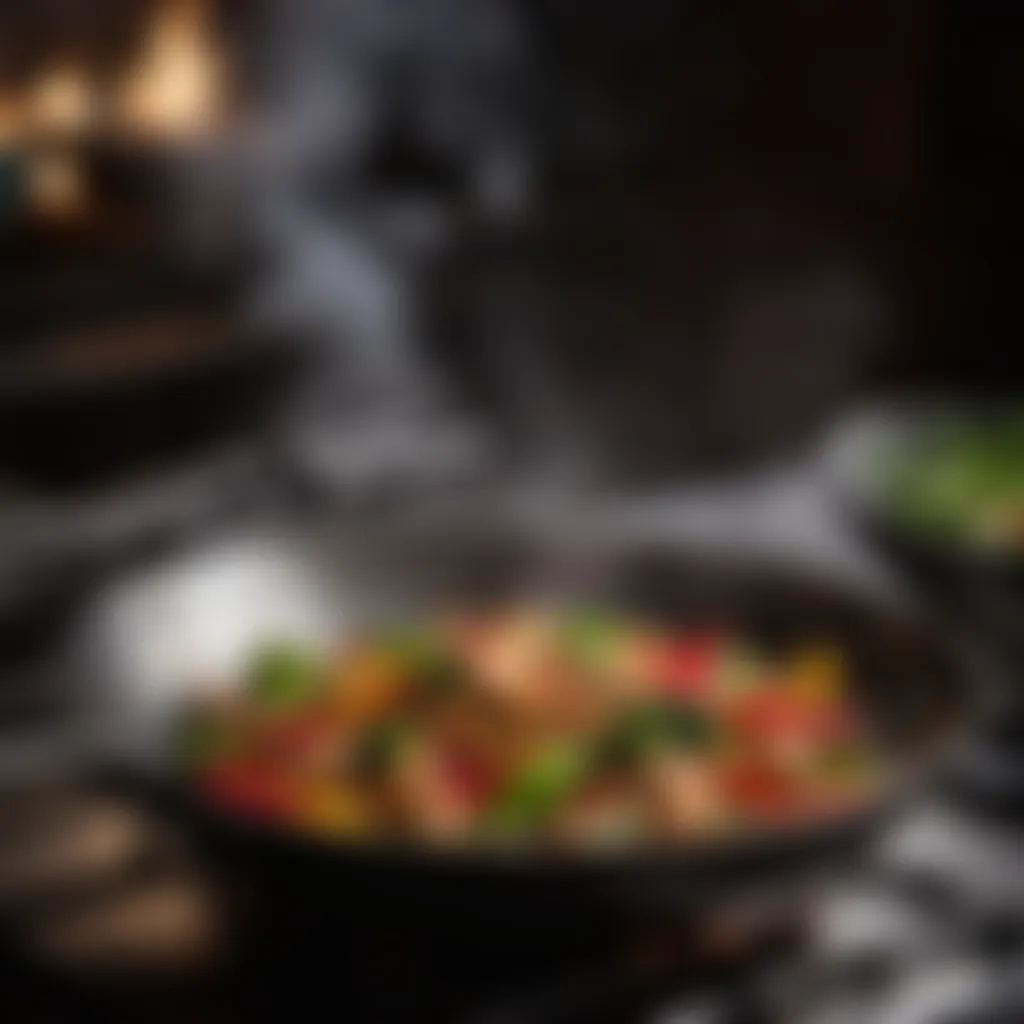
Roasting
Roasting employs dry heat in an oven, leading to intensified flavors and appealing textures. Roasting vegetables or meats can caramelize their natural sugars, creating rich, deep flavors. One significant feature of roasting is the Maillard reaction, contributing to browning, which enhances taste. However, it often requires longer cooking times and can dry out foods if not checked regularly.
Sautéing
Sautéing is a quick cooking technique that utilizes a small amount of fat over relatively high heat. It's ideal for vegetables and proteins when you want to retain some crispness while cooking through. The unique aspect of sautéing lies in its speed; however, improper temperature can lead to burnt food quickly, so attention is key.
Grilling
Grilling is more than just a cooking technique; it's an experience. Cooking food on a grate over direct heat imparts a smoky aroma and distinctive char. The appeal of grilling lies in its ability to infuse flavor while promoting a healthier cooking style because excess fats drip away. Precision is needed here, as different foods have variances in cooking times, potentially leading to overdone or undercooked results.
Advanced Techniques in Cooking
The kitchen can be a wondrous playground filled with endless possibilities, and mastery of advanced techniques can elevate your cooking game to delightful new heights. Beyond the fundamentals, delving into methods like sous vide, fermentation, and molecular gastronomy not only allows you to explore creativity but also improves precision and flavor enhancement. As home cooks venture into these sophisticated realms, they unlock the potential for extraordinary dishes that are both visually stunning and palate-pleasing.
Sous Vide
Principles and Equipment
Sous vide, which translates to "under vacuum" in French, is a cooking method that has captivated both professional chefs and home cooks alike. It involves sealing food in a vacuum bag and immersing it in a water bath at a carefully controlled temperature. This process allows for even cooking and results in textures that are simply unattainable through traditional methods.
The equipment needed is quite simple: a sous vide machine or immersion circulator and vacuum-seal bags. Some may find sous vide to be an investment; however, once you get a hang of it, the precision it offers not only ensures that your proteins remain moist and tender but also minimizes the risk of overcooking.
In this context, it’s worth noting that sous vide differs from other cooking techniques. The key characteristic that enhances its popularity lies in its ability to retain the natural juices and flavors, making it a favorable choice for methods covered in this guide. What really stands out is its seamless integration into various cuisines — from a perfectly cooked steak to eggs that are impossibly creamy.
Advantages and Disadvantages
Diving deeper into the advantages of sous vide, one cannot ignore its ability to produce consistent results each time. For those juggling busy schedules, food can be set to cook while one addresses other tasks. Plus, the vibrancy of flavors created during the process is a delightful bonus.
However, no technique is without its downsides. It can be time-intensive, sometimes requiring several hours for completion. And, while it generally doesn't require meticulous attention, it can feel rather foreign to someone used to traditional methods. Also, the need for specialized equipment adds another layer to consider.
Fermentation
Microbial Action
Fermentation has stood the test of time as a fascinating culinary technique that brings flavors alive while fostering health advantages. At its essence, microbial action is the star of the show; using yeast, bacteria, or molds, ingredients transform in remarkable ways. It’s the process that gives us beloved staples like yogurt, kimchi, and sourdough bread.
What makes the microbial action remarkable is that it not only enhances flavor but also improves digestibility. Many choose to explore fermentation as a way to connect with historical cooking practices, while others are drawn to its health benefits. While it may seem intimidating at first, even a novice can start with simple recipes, gradually building up to more complex creations.
Applications in Modern Cuisine
When it comes to applications in modern cuisine, fermentation has become an art that many chefs celebrate. The practice has taken center stage on many restaurant menus, with dishes showcasing pickled vegetables or house-made probiotic-rich creations. Quite simply, fermentation introduces an extra layer of complexity to meals, bridging old techniques with modern tastes.
Key characteristic of this culinary trend is its flexibility. It can adapt to various ingredients and can be done at home without need for fancy equipment. Yet, for those who dare to dive in, the unique flavors and textures achieved through fermentation mark a thrilling adventure in cooking.
Molecular Gastronomy
Scientific Foundations
Stepping into molecular gastronomy feels like entering an exciting realm where culinary art meets science. At its core, the scientific foundations of this practice involve understanding chemical transformations and how they affect flavor, texture, and presentation. It's an exploration of food at the molecular level — think about spherification, foams, and gels that challenge culinary norms.
This approach is riveting because it encourages cooks to reimagine possibilities, moving beyond traditional recipes into innovative culinary creations. For instance, who would have thought that a liquid could turn into a delicate sphere that bursts with flavor? The key characteristic that sets aside molecular gastronomy is its fusion of scientific techniques with cooking, making it a dynamic choice for those keen on pushing the limits in the kitchen.
Examples of Techniques
The world of molecular gastronomy is vast, and the examples are as intriguing as they come; techniques like sous vide cooking and spherification push tradition to its limits. Using ingredients like sodium alginate and calcium chloride, dishes transform visually and gastronomically, leaving diners with unforgettable experiences.
The allure of these techniques lies not only in their novelty but also in their potential for flavor enhancement and presentation. However, meticulous attention to detail is paramount; even slight deviations in measurements can result in drastically different outcomes. For those willing to engage with its complexities, molecular gastronomy proves to be a rewarding avenue that challenges culinary minds and delights the senses.
The Role of Flavor and Seasoning
A kitchen without flavor is like a stage without an audience. In culinary arts, flavor and seasoning aren’t just add-ons; they are the heartbeat of a dish. The right seasoning can elevate a simple meal to a feast, making it not just something to eat, but an experience to savor. Understanding how to manipulate flavor is essential for both professional cooks and home chefs. This section dives into the core of flavor, examining its profiles, essential spices, and the fine art of balancing tastes.
Understanding Flavor Profiles
Flavor profiles are the foundation of culinary magic. They capture the essence of what makes food delightful. Each profile has a unique personality that can transform boring ingredients into mouth-watering delights. All the great cuisines of the world—be it Thai, Italian, or Mexican—rely on their distinct flavor profiles which combine sweet, sour, salty, and bitter notes.
According to experts, a well-rounded dish often contains elements from multiple profiles, creating harmony on the palate. Take for instance Tom Yum soup, which embodies spicy, sour, and savory notes; each sip tells a story of ingredients working together. Understanding these profiles not only improves cooking but also allows cooks to creatively adapt and adjust recipes as needed.
Essential Spices and Herbs
Commonly Used Spices
Spices are the quiet heroes in your kitchen. They bring warmth, depth, and complexity to your dishes. Commonly used spices, like cumin, paprika, and coriander, aren’t just staples; each substance offers unique character to a culinary creation.
Cumin, for instance, with its earthy aroma and warm flavor, is a popular choice for dishes ranging from savory stews to spicy salsas. Its versatility makes it an everyday favorite, enhancing flavors without overwhelming them. Be it in a rich curry or laid back hummus, cumin knows its place and shines where needed. However, it’s important to use spices with care, as too much can easily overpower the subtler flavors.
"A pinch of spice may well be worth a pound of gold in a dish."
Preserving Fresh Herbs
Fresh herbs add a burst of vibrancy and brightness to culinary creations. Preserving them ensures that home cooks can infuse dishes with their aromatic flavors year-round. One might think that fresh herbs lose their potency with time, but there are effective methods to retain their flavors.
Freezing is a commonly used technique. Chopping fresh herbs and mixing them with olive oil before pouring into an ice cube tray allows for easy storage and future use. This method captures the essence of herbs, barring any regret for lost freshness after a few days in the fridge. It’s a practical trick that not only maximizes culinary potential but also minimizes waste.
Balancing Flavors
Finding a balance between sweet, sour, salty, and bitter is akin to being a culinary tightrope walker. Not every successful dish is born out of complexity; sometimes it’s the simplest flavors that win hearts. Understanding how to balance these basic tastes can mean the difference between a delightful dish and an unappetizing one.
Sweet, Sour, Salty, Bitter

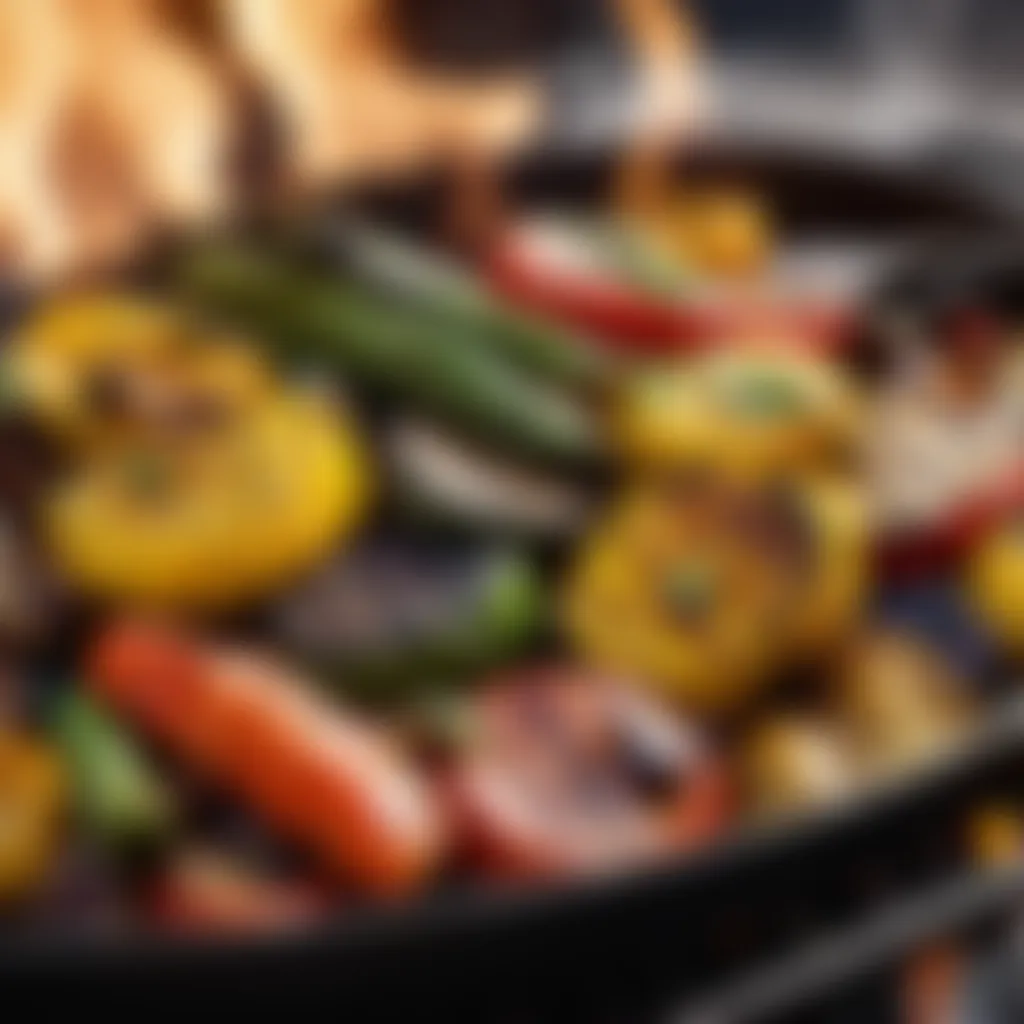
Sweetness may often steal the show, but it’s complementary flavors that help it shine. For instance, adding a hint of sourness from lime or vinegar can enhance the sweetness in a mango salad or brighten a rich duck dish, making each ingredient stand out. Similarly, a touch of saltiness can enhance sweetness and reduce bitterness, drawing out the natural flavors of vegetables.
The beauty of these basic tastes lies in their interdependence. Each flavor, when added in the appropriate proportion, lifts the others, crafting a symphony on the palate. Too little seasoning can leave a dish flat, while too much can mask its essential notes.
Umami and Its Impacts
The fifth taste, umami, is often overlooked but is crucial in enriching flavor experiences. Found in ingredients like mushrooms, aged cheeses, and fermented products, umami provides a rich depth that can transform ordinary dishes into gastronomic delights.
This savory quality enhances other flavors, leading to a multi-dimensional taste experience. For instance, incorporating a splash of soy sauce into a stir-fry not only amplifies other savory ingredients but also adds a complexity that rounds out the dish. Understanding umami and its ability to merge flavors is essential for anyone looking to master the intricacies of cooking.
In summary, mastering flavor and seasoning is an indispensable skill in the culinary realm. Cooks who appreciate the nuances of flavor profiles, utilize essential spices, preserve fresh herbs, and skillfully balance basic tastes can create exceptional dishes that resonate with everyone who enjoys their cooking.
Presentation Techniques
In the culinary arts, presentation techniques play a crucial role in transforming a simple dish into an extraordinary experience. The way food is presented can significantly enhance its appeal, enticing diners even before the first bite is taken. When dishes are thoughtfully arranged, they not only showcase the ingredients but also reflect the skill and creativity of the chef. Moreover, a visually appealing plate sets a higher expectation for taste, influencing the overall dining experience. For anyone interested in elevating their cooking, mastering presentation techniques is essential and can lead to a more rewarding interaction around the dining table.
Plating Essentials
Choosing the Right Plates
Choosing the right plates is a fundamental step in achieving a beautiful presentation. The size, shape, and color of the plates can dramatically affect how the dish is perceived. A larger plate may allow for a more lavish presentation, leaving space to showcase garnishes or sauces artfully drizzled. Conversely, a smaller plate can make portions appear larger, which is often an advantage when serving haute cuisine.
The key characteristic of suitable plating materials lies in their contrast to the food. For instance, a dark plate can make vibrant dishes pop, while a simple white plate offers an elegant, timeless background. This choice can be very beneficial, especially in showcasing colorful foods, drawing the eye to the dish rather than the plate itself. However, using a plate that’s too busy or patterned can detract attention from the food, so clarity and contrast are important here.
Unique features of different plate types include shallow bowls for soups and deep dishes for casseroles. Both have their own advantages, helping to frame the meal effectively. It's vital to consider that the wrong plate can lead to a cluttered or chaotic appearance, which may negatively impact the dining experience.
Color and Texture Considerations
Color and texture considerations in food presentation are integral in creating a visual feast. Color instantly captures attention and plays a vital role in stimulating appetite. A dish that combines a variety of colors can convey freshness and nutritional value, appealing to health-conscious diners. Adding contrasting colors can highlight specific elements of a dish or draw attention to sauces and emulsions used as accompaniments.
Moreover, texture also adds depth to the presentation. A plate featuring crisp, fresh vegetables alongside creamy sauces or crunchy garnishes brings a multisensory experience to the table. The key characteristic here is to harness both contrast and harmony—while segments of a dish may vary greatly in color and texture, they should still work together as a cohesive whole. This balance makes a presentation successful.
The unique advantage of considering both color and texture is that it elevates a home-cooked meal to a restaurant-quality experience. However, one should be cautious. Overdoing extremes may lead to an unpleasant clash, which detracts from the dish rather than enhancing it, thus maintaining a fine line between creative expression and aesthetic overload.
Garnishing Food
Techniques for Effective Garnishing
Garnishing food isn’t just about adding flair; it’s a technique that completes the dish. Effective garnishing elevates food presentations from good to exceptional. Specific techniques include the use of herbs, edible flowers, or sauces that complement the flavors of the dish. For example, a few sprigs of fresh cilantro on a spicy Mexican dish not only add flavor but immediately make the plate more attractive.
The key characteristic of effective garnishing is restraint and relevance. A garnish should enhance, not overshadow, the main components of the dish. For example, using a delicate sliver of lemon zest can brighten a rich dessert without overwhelming it. Thoughtful garnish choices can increase a diner's anticipation for a dish, making it a beneficial choice for any culinary situation.
A unique feature of garnishing techniques is their versatility. They can range from minimalistic—like a single herb leaf—to more intricate setups, allowing one’s creativity to shine. However, over-garnishing can lead to a dish that feels cluttered, so always focus on balancing aesthetics with taste.
Herbal and Edible Garnishes
Herbal and edible garnishes offer an immediate way to enhance both the flavor and look of dishes. Fresh herbs like parsley, chives, or basil can add a burst of color and a hint of freshness. They bridge flavors, creating a perfect synergy that enriches the eating experience.
The main advantage of using herbs lies in their ability to provide a fresh element that complements dishes. For instance, a sprinkle of fresh dill over salmon not only brightens the plate but raises the overall flavor profile as well, making the dish more complex.
The unique feature of edible garnishes is that they are often locally sourced or home-grown, providing a personal touch to meals. However, a disadvantage could be that some diners may have allergies or preferences that limit their appreciation for certain garnishes. Consequently, it's important to consider these factors when selecting garnishes, ensuring that every guest can enjoy the presentation without concerns.
Tools and Equipment
Understanding the right tools and equipment in cooking can make or break your culinary experience. A well-equipped kitchen not only enhances efficiency but also sparks creativity, helping home cooks to experiment with different techniques. Having the right tools can streamline processes and elevate dish offerings, ultimately leading to greater satisfaction in both preparation and consumption.
As we delve into this section, we will cover two vital areas: the essential kitchen tools and how to maintain that equipment.
Essential Kitchen Tools
Cookware Types
Cookware types are fundamental in every kitchen, and they include pots, pans, and specialized bakeware. Each serves a specific purpose and contributes uniquely to the cooking process. For instance, a sturdy cast iron skillet is not only a crowd favorite but also ideal for searing meat and retaining heat, making it a popular choice. The key characteristic of these cookware types is their material, ranging from stainless steel to non-stick coatings, which influence cooking efficiency and outcomes.
A unique feature of cast iron cookware is its ability to withstand high temperatures and retain heat for a long duration. However, one has to consider that it requires seasoning to maintain its non-stick properties, posing a disadvantage for some. Nevertheless, it’s widely appreciated for the depth of flavor it can infuse into dishes.
Utensils and Appliances
When it comes to utensils and appliances, these are the unsung heroes of the kitchen. From measuring cups to mixers, each plays a critical role in ensuring precision and consistency. The key characteristic of these tools is their versatility. For example, a food processor can slice, chop, and puree, thereby saving time and effort.
The unique aspect of these utensils is their design; ergonomic handles can enhance comfort, especially during prolonged use. However, while many appliances offer multifunctionality, some can be complex and require a learning curve to operate effectively. That said, the investment in quality utensils can lead to a more enjoyable cooking experience.
Maintaining Equipment
Cleaning and Safety Protocols
Keeping kitchen equipment clean is not just about aesthetics; it's vital for safety and food hygiene. The importance of cleaning and safety protocols cannot be overstated, as they help prevent cross-contamination and ensure that your tools retain their functionality. Regularly cleaning cutting boards and knives after every use stops harmful bacteria in their tracks.
A particular highlight is the practice of separating cleaning materials; using one cloth for surfaces and another for appliances minimizes the risk of spreading contaminants. While it takes an extra moment to adopt these habits, the long-term benefits truly pay off, making it an essential concept to grasp.
Storage Recommendations
Storing your kitchen tools correctly is just as important as using them properly. Maintaining organized storage solutions not only extends the life of your equipment but also enhances your preparation flow. Utilizing drawer dividers or utensil trays ensures that everything has a designated spot, making it easy to find what you need without rummaging around.
The key characteristic of proper storage is accessibility as it allows you to focus more on cooking rather than looking for tools. However, overstuffed drawers can create a cluttered space, which can be counterproductive. With a little effort in organizing, you can create a functional workplace that encourages creativity and efficiency in your culinary endeavors.
Culinary Traditions and Influences
Culinary traditions and influences play a significant role in shaping the art of cooking. They are not just recipes passed down through generations, but a reflection of the cultural, historical, and personal connections we have with food. Understanding these traditions allows us to honor the past while innovating in the kitchen. When dive into cooking, it's essential to grasp how regional customs and cultural influences can inspire creativity, enhance flavors, and foster appreciation for diverse cuisines.
Regional Cuisines
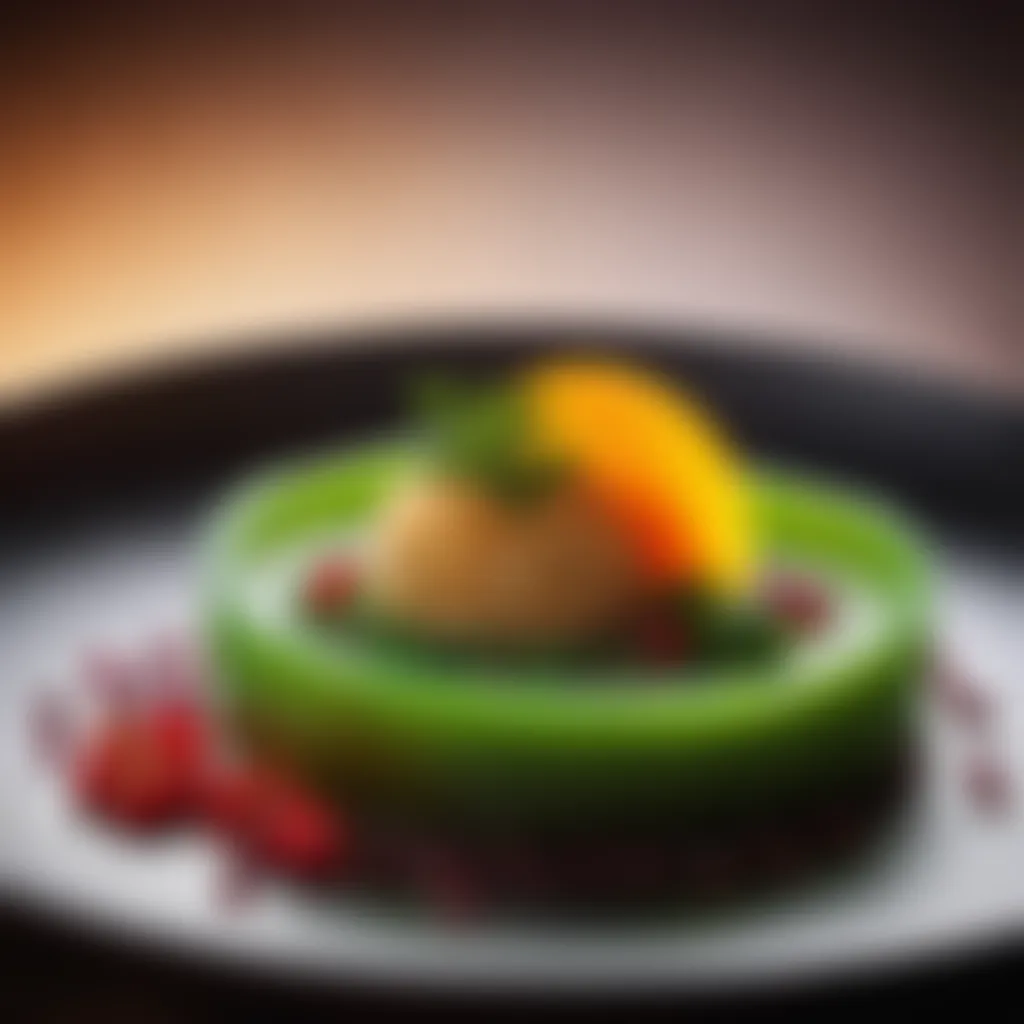
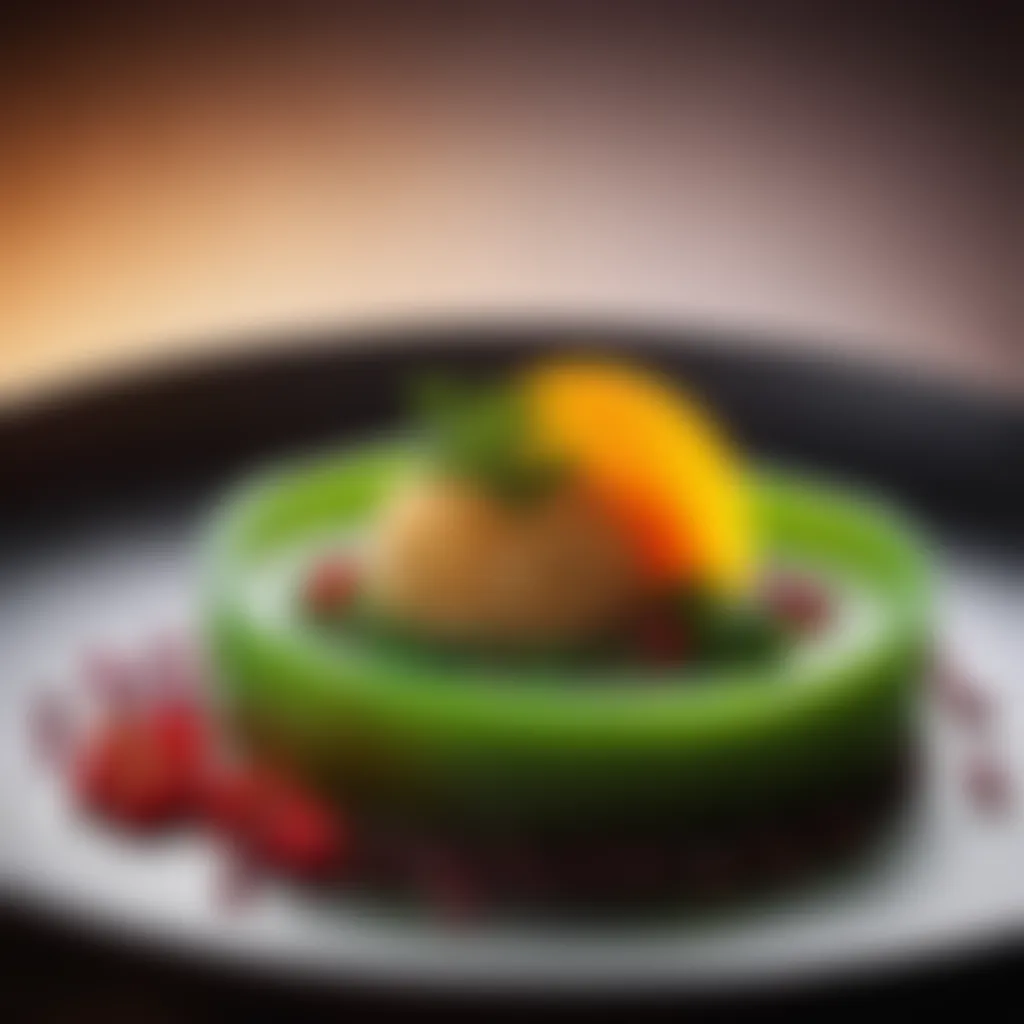
Characteristics of Major Cuisines
The hallmark of major cuisines lies in their unique characteristics that result from local ingredients, climate, and cultural practices. For instance, Italian cuisine is a symphony of fresh herbs, tomatoes, and rich flavors, while Japanese cooking emphasizes subtlety, elegance, and seasonality. Each cuisine comes with a treasure trove of techniques and philosophies that enrich one's culinary arsenal.
Key to these cuisines is the focus on traditional methods combined with local produce, which not only showcases a sense of place but also emphasizes sustainability. By understanding these characteristics, home cooks can create authentic dishes that resonate with cultural heritage. Moreover, their unique features, such as spice blends in Indian cuisine or fermentation techniques in Korean dishes, hold distinct advantages, enhancing flavors in ways that find a connection among varied palates.
Fusion Versus Authentic Practices
In today's culinary landscape, the debate about fusion versus authentic practices is vibrant and ongoing. Fusion cuisine combines elements from different culinary traditions, resulting in innovative dishes that can surprise and delight. Think tacos filled with Indian-inspired spices or sushi rolls featuring Mediterranean ingredients. Such creativity has become increasingly popular, making it a vital part of contemporary cooking discussions.
However, amid this culinary mash-up, authentic practices hold their own significance. They provide a deeper understanding of tradition, respecting the origins of dishes. The challenge lies in striking a balance. Some may argue that fusion risks diluting authenticity, while others see it as a natural evolution of cuisine. Each approach offers its own advantages and disadvantages; fusion brings excitement, while authenticity lays the groundwork for appreciation of heritage.
Cultural Influences on Cooking
Globalization and Cooking Styles
Globalization has profoundly impacted cooking styles around the world. The cross-pollination of culinary practices leads to diverse combinations of flavors and techniques. This exchange not only introduces new ingredients into local diets but also inspires a more inclusive culinary community.
One can appreciate the pros and cons of globalization. On the positive side, it encourages exploration beyond one’s cultural background, inviting flavors from afar into everyday cooking. On the flip side, there is the risk of overshadowing traditional cuisines, leaving them underappreciated. Yet, being aware of this interplay allows the home cook to make informed choices and embrace the beauty of culinary diversity.
Food as Cultural Identity
Food plays a crucial role in cultural identity, serving as a vessel for personal and collective stories. It’s often said that one can tell much about a culture by its food. Ingredients used, cooking methods, and even dining rituals offer insights into traditions and values.
Celebrating cultural identity through food can foster a sense of belonging. For instance, sharing a family recipe during holidays binds generations, while the meal itself becomes a narrative of heritage. While this unique feature highlights the beauty and richness of cultural practices, it also poses challenges in our fast-paced world. The risk of losing these stories amid globalization and modernization is real, yet documenting and sharing these culinary narratives ensures that food continues to serve as a bridge between cultures.
"Food is our common ground, a universal experience."
By approaching cooking through the lens of traditions and influences, cooks can enrich their culinary experiences. Not only do these customs enhance cooking skills, they also deepen the appreciation for what’s on the plate, linking past practices with future creativity.
Practical Applications and Real-World Skills
In the realm of culinary arts, practical applications and real-world skills are essential elements that bridge theory with practice. Mastering these skills enables home cooks to go beyond recipes, fostering creativity and adaptability in the kitchen. This section offers valuable insights into two significant areas: meal planning and preparation, along with navigating dietary restrictions, ensuring that both novice and seasoned cooks are well-equipped.
Meal Planning and Preparation
Creating Balanced Meals
Creating balanced meals is about the right mix of nutrients to support overall health and well-being. A well-rounded plate usually includes proteins, carbohydrates, and fats alongside a colorful array of fruits and vegetables. Instead of just satisfying hunger, this approach contributes to more than physical health; it enhances mental clarity and boosts energy levels throughout the day. The key characteristic of creating balanced meals is variety—consuming different food types to cover all essential nutritional bases.
One unique feature of balanced meals is that they provide a sustainable way to stay healthy, making it easier to maintain energy levels while also keeping dietary choices enjoyable. However, planning these meals can be a bit tedious, and it might feel overwhelming to ensure all categories are met in each meal.
Benefits include:
- Improved Nutritional Intake: Supports health.
- Enhanced Cooking Skills: Learning about food combinations.
- Increased Creativity: Finding new ways to use ingredients.
Disadvantages, however, might be:
- Time Consuming: Requires thought and planning.
- Cost Implications: A diverse diet can be more expensive.
Time Management in Cooking
In today’s fast-paced world, mastering time management in cooking is increasingly vital. Efficient time management can take a stressful experience and make it smooth as butter. This skill allows one to prepare meals quickly without sacrificing quality or taste. Employing techniques such as mise en place—having all ingredients prepped and organized—can significantly cut down cooking time. Another important characteristic is planning meals ahead, ensuring that ingredients are readily available and reducing the impulse to rely on takeout.
Unique to these skills is the ability to multitask. Cook multiple components of a meal simultaneously rather than sequentially, giving you more time at the dinner table and less in the kitchen. However, learning to manage time well requires practice and patience.
The advantages include:
- Reduced Stress: Less frantic cooking.
- Increased Efficiency: Time-saving methods.
- Ability to Try New Recipes: More time for experimentation.
While downsides could be:
- Requires Consistent Practice: Learning curve might be steep.
- Need for Organization: Chaos can lead to inefficiency.
Navigating Dietary Restrictions
Understanding Allergies and Intolerances
Understanding allergies and intolerances is crucial, especially as more people become health-conscious or face dietary issues. This aspect emphasizes the importance of knowing which ingredients to avoid, as even a small oversight can have significant consequences for someone with a serious allergy.
The key characteristic here is awareness—not only of personal dietary needs but also those of others. This understanding is beneficial, as it encourages home cooks to innovate and explore alternative ingredients, which enriches their culinary skills.
A unique feature of mastering this knowledge is the ability to adjust and create recipes that accommodate these restrictions, which ultimately broadens one’s culinary repertoire. On the flip side, it can be challenging to find substitutes that maintain flavor and texture, making it a balancing act.
Advantages include:
- Creative Problem Solving: Finding alternatives becomes an art.
- Expanded Knowledge of Ingredients: Deepens culinary expertise.
- Inclusivity in Meal Preparation: Everyone can enjoy.
Disadvantages may be:
- Limited Ingredient Choices: Some flavors might be lost.
- Potential for Cross-Contamination: Risks in shared kitchen spaces.
Adapting Recipes Accordingly
Adapting recipes for dietary restrictions is about flexibility and creativity in the kitchen. This skill contributes directly to the overall goal of empowering cooks to cater to any dietary need without losing the essence of the original dish.
Key in this process is flexibility—not tying oneself to traditional recipes but instead embracing the idea that food can be modified while still being enjoyable. This approach can certainly be beneficial; it allows for experimentation and innovation.
Unique to this skill is the opportunity to explore less common ingredients, which can lead to discovering new favorites while still providing nutritious options for everyone. The challenge, however, can be reconciling taste with necessary changes, as using substitutes sometimes yields differing results than expected.
The advantages of adapting recipes include:
- Broadened Culinary Horizons: New ingredients, new tastes.
- Personalized Meals: Aligns with specific preferences or health needs.
Disadvantages might be:
- Trial and Error Process: Might not always work out.
- Potential Compromise in Flavor: When using substitutes.







